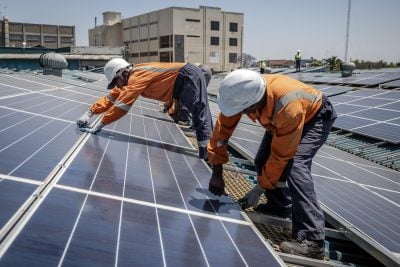Given the fact that around half of all iron ore exports go to China, and that the nation produces a similar proportion of the world’s steel, it is no wonder that events there are the focus of the industry’s attention.
World steel output is forecast to grow by around 3% this year with that growth coming largely from China, with other traditional major consumers treading water or reducing their consumption.
China produced a record 767m tonnes of steel in 2012 and estimates that it will need 1.2bn tonnes per year of iron ore by 2020.
There is a wealth of positive data coming out of China lately – in particular the positive turn in the official purchasing managers’ index (PMI) driven by a very significant upturn in infrastructure spending in the fourth quarter. (PMI is a widely respected indicator of the health of a nation’s manufacturing sector. It is based on five indicators; new orders, inventory levels, production, supplier deliveries and employment. If the PMI figure is above 50 then the sector is expanding, if it is below 50 then it is contracting.)
Such PMI optimism has not been seen since May 2011. The World Bank forecasts the Chinese economy will grow 8.4% in 2013, rebounding strongly from its less than 8% growth last year. Largely because of worries about the Chinese recovery, 2012 has been a year of extremes for iron ore prices. Their roller-coaster performance saw them hit a three year low in September of $88 per tonne, which led to a number of planned large capital expenditure increases to be deferred.
However, prices have since rebounded 75% to $155 per tonne – more than a tenfold increase on those seen in 2002. Prices have not been this high since October 2011. They reached their peak at the beginning of 2011 at $200 per tonne.
Currently the big three, BHP Billiton, Rio Tinto and Vale, control the lion’s share, some 70%, of seaborne ore. However, according to Equatorial Resources MD John Welborn, whose company mines in the Republic of Congo, the large and high quality deposits in West and Central Africa – like Simandou and Kalia in Guinea, Belinga in Gabon, Mbalam on the Republic of Congo/Cameroon border and Tonkolili in Sierra Leone – mean the continent may become the source of as much as 30% of the world’s ore over the medium term. Simandou alone could supply 12% of the seaborne trade. Certainly these projects are set to compete strongly on price. (See box p. 57)
China’s push for mineral resources and its massive appetite for iron ore in particular, has seen more takeovers of African miners. The country has invested $10bn in iron ore projects world wide in the last five years. It is keen to reduce its dependence on the big three and Australian and Brazilian imports.
Most recently, Hanlong Group is set to finalise its purchase of Sundance Resources, who own the Mbalam project on the Republic of Congo/Cameroon border. A previous bid in July 2011 had been rebuffed but in August 2012, in the face of turbulent circumstances for the sector, Sundance agreed to the $1.47bn takeover. Following the proposed investment of $5bn, Mbalam is expected to yield some 36m tonnes of ore per year.
China has so far seen little return on its investments, since virtually all the major iron ore projects in Africa require vast infrastructure spending such as on rail and ports. This will likely change between now and 2015, when China hopes to import around half of its iron ore from Chinese owned mines overseas.
Want to continue reading? Subscribe today.
You've read all your free articles for this month! Subscribe now to enjoy full access to our content.
Digital Monthly
£8.00 / month
Receive full unlimited access to our articles, opinions, podcasts and more.
Digital Yearly
£70.00 / year
Our best value offer - save £26 and gain access to all of our digital content for an entire year!
 Sign in with Google
Sign in with Google 


